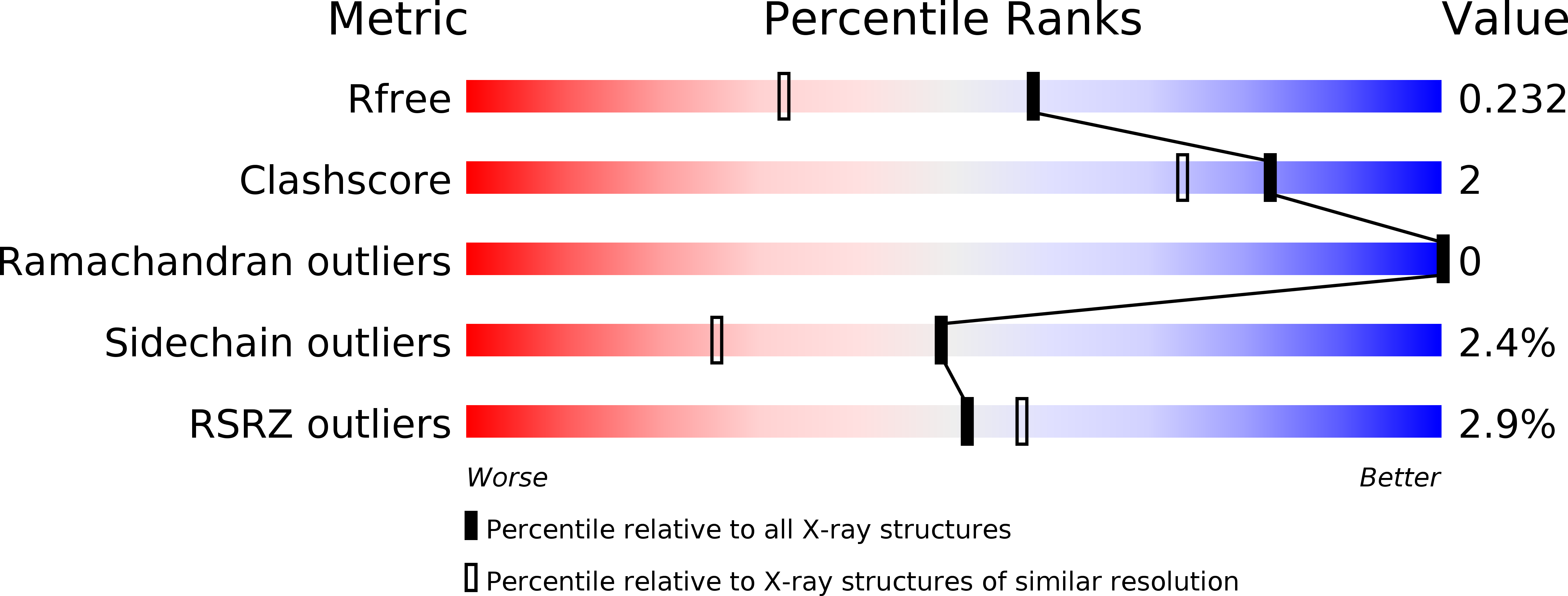Structural basis of the gamma-lactone-ring formation in ascorbic acid biosynthesis by the senescence marker protein-30/gluconolactonase
Aizawa, S., Senda, M., Harada, A., Maruyama, N., Ishida, T., Aigaki, T., Ishigami, A., Senda, T.(2013) PLoS One 8: e53706-e53706
- PubMed: 23349732
- DOI: https://doi.org/10.1371/journal.pone.0053706
- Primary Citation of Related Structures:
4GN7, 4GN8, 4GN9, 4GNA, 4GNB, 4GNC - PubMed Abstract:
The senescence marker protein-30 (SMP30), which is also called regucalcin, exhibits gluconolactonase (GNL) activity. Biochemical and biological analyses revealed that SMP30/GNL catalyzes formation of the γ-lactone-ring of L-gulonate in the ascorbic acid biosynthesis pathway. The molecular basis of the γ-lactone formation, however, remains elusive due to the lack of structural information on SMP30/GNL in complex with its substrate. Here, we report the crystal structures of mouse SMP30/GNL and its complex with xylitol, a substrate analogue, and those with 1,5-anhydro-D-glucitol and D-glucose, product analogues. Comparison of the crystal structure of mouse SMP30/GNL with other related enzymes has revealed unique characteristics of mouse SMP30/GNL. First, the substrate-binding pocket of mouse SMP30/GNL is designed to specifically recognize monosaccharide molecules. The divalent metal ion in the active site and polar residues lining the substrate-binding cavity interact with hydroxyl groups of substrate/product analogues. Second, in mouse SMP30/GNL, a lid loop covering the substrate-binding cavity seems to hamper the binding of L-gulonate in an extended (or all-trans) conformation; L-gulonate seems to bind to the active site in a folded conformation. In contrast, the substrate-binding cavities of the other related enzymes are open to the solvent and do not have a cover. This structural feature of mouse SMP30/GNL seems to facilitate the γ-lactone-ring formation.
Organizational Affiliation:
Cellular Genetics, Graduate School of Science and Engineering, Tokyo Metropolitan University, Hachioji, Tokyo, Japan.
















